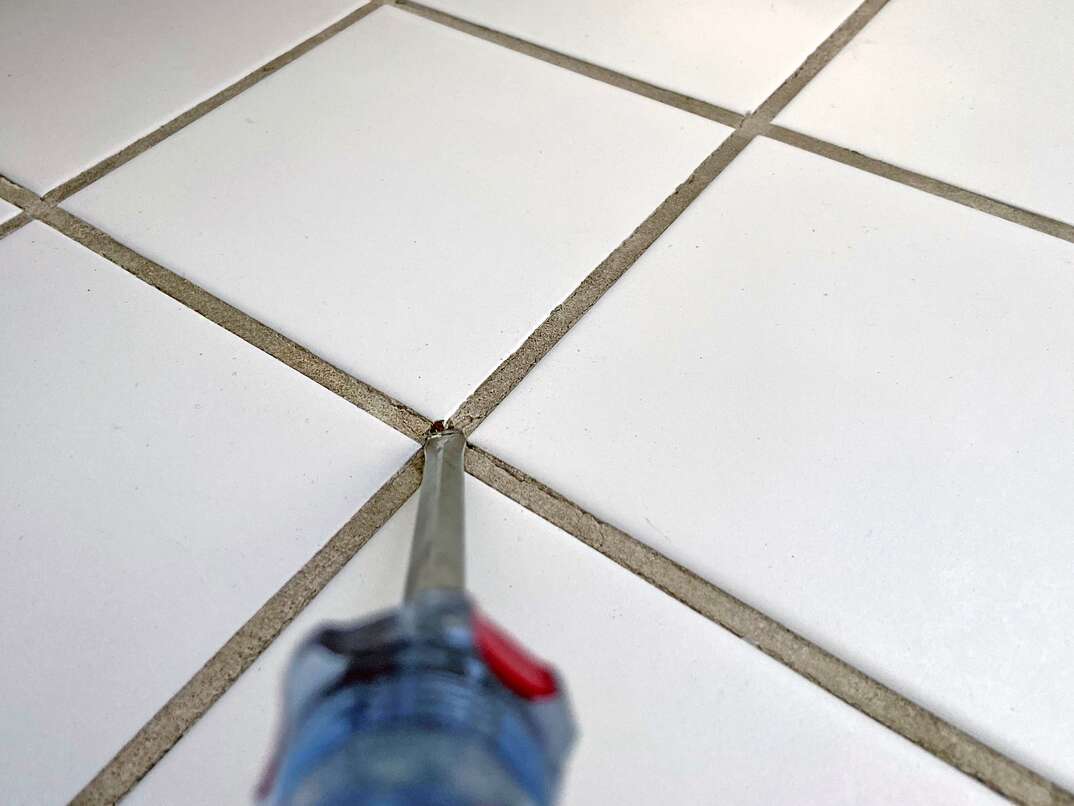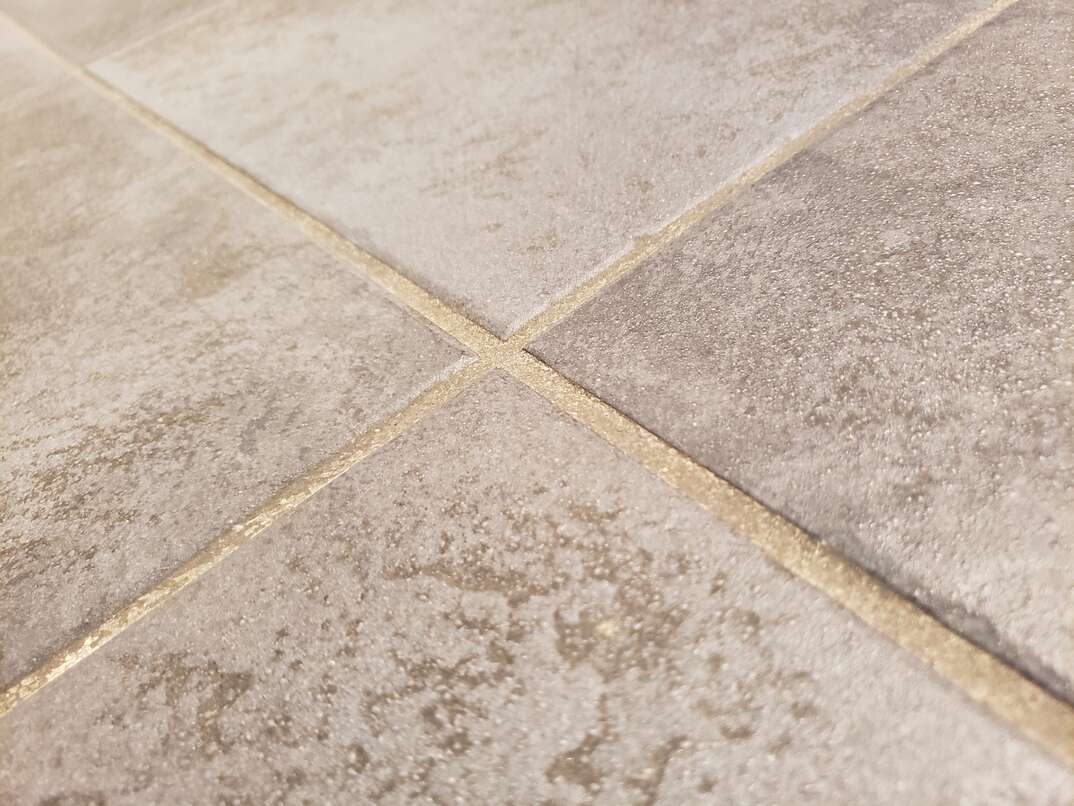Get the Grout Out: How to Remove Grout From Tile

Grout. It’s one of the key ingredients of any tile project. Grout is a cement-based mixture that’s used to fill joints between tiles. Applied correctly, it can retain its color and hardiness for many years. However, if grout hasn’t been properly sealed, it can permanently stain and break apart, even after minor use. Crumbling, dirty grout can make even the most updated kitchen or bathroom look dingy. Worse yet, poorly applied grout can cause your tiles to loosen, making it an ideal place for mold, mildew and moisture to thrive.
This May Also Interest You: Tale of the Tile: An Overview of Bathroom Tile Flooring
But, make no mistake, a_ll_ grout will need to be removed and replaced at some point. While it may seem daunting, with the proper tools and a little patience, removing old grout is a surprisingly doable do-it-yourself project, even for those new to tile work.
Whether you’re renovating the bathroom of an older home or looking to fix a poorly grouted kitchen backsplash, read on to learn how to safely and efficiently remove grout without damaging the existing tiles, or yourself, in the process.
 ----------------------------------------
----------------------------------------
Manual or Mechanical
There are generally two methods for removing grout between tiles. The method you choose depends largely on the size of the project, your comfort level with power tools and how much time you have to put in.
The first method is the old-fashioned, by-hand way. If you want to go this route, you’ll need a manual removal tool like a grout rake. Manual grout removal tools typically have a sharp triangular-shaped blade made from carbide or tungsten that’s specifically designed to grind and dig up grout lines. As you can imagine, using a manual tool to remove grout can be a meticulous, time-consuming process. So, if you have a large area to cover, this method might not be ideal. However, if you’re just removing the grout in a small kitchen backsplash, or in an area that requires fine, detail-oriented work, then a manual grout remover might be the right play.
The second method is, for the vast majority of grout-removal projects, much quicker and easier. You’ll need to purchase an oscillating multi-tool fit with a special grout-removing bit to remove grout for this job. Not that experienced with power tools? Many oscillating tools are small and surprisingly easy to maneuver, such as the ever-popular Dremel tool.
Safety and Cleanup
Oscillating multi-tools make quick work of grout-removal projects, but you’ll want to make sure that you have the proper safety and cleanup items before you start. Multi-tools are powerful instruments and, as they grind through cement-based grout, tend to send small chunks of grout flying through the air. Save yourself a visit to the ER and wear safety goggles for the entirety of your project. If possible, you may want to wear some form of ear protection, as well, as multi-tools can be loud. Additionally, you may want to have a shop vac handy to vacuum up your grout debris as you work. If you don’t have access to one, a sturdy broom and household vacuum will work just fine.
More Related Articles:
- How to Clean Grout
- A Homeowner's Guide to Mold Removal
- How to install a Kitchen Backsplash
- Here's How to Clean Your Hardwood Floors for That Flawless Shine
- DIY Plumbing: How to Install a Toilet
Easy Does It
Using a multi-tool to remove tile is a relatively simple task, but it can pose challenges if you aren’t careful. As you begin, remember to hold the tool vertically to remove vertical tile lines and horizontally to remove horizontal lines. After turning on the power, be careful to only very lightly press the blade on the grout. Keep your eyes on the blade, and you should notice the bit easily clearing away the existing grout. Resist the tendency to push or press on the grout — you run the risk of pressing too hard and accidentally breaking tile.

How to Remove Grout Haze
During your grout removal project, you may want to remove any leftover grout haze before applying new grout. Grout haze is leftover grout residue that has been allowed to harden on the surface of the tile during installation. During a tile project, you can avoid haze by making sure you wipe your tiles with a grout sponge after application. However, if it’s been more than a few days, grout haze can harden and cure like all grout does.
To remove grout haze, you’ll want to use a special grout haze remover, a cleaner that, when properly used, will eliminate any hardened grout film left on the surface of your tile. Begin by cleaning your tile thoroughly, and make sure you use a mop on the floor to dampen the grout. Then, while wearing protective gloves, mix the grout cleaner with water to dilute the chemical cleaner. The exact proportions of the solution depend on the brand of cleaner you get, but as a general rule, your dilution depends on your grout haze level: the heavier the residue, the more cleaner you’ll need. After mixing, use a nylon bristled brush to scrub each individual tile. Although it may take some time, a good cleaner should be able to easily remove grout haze without too much exertion.
Grout With the Old, Grin With the New...
Once the grout is out, you can then go ahead and replace it with fresh, clean grout. This allows you to change the grout color if you'd like, which can give any tiled space a truly dramatic freshening-up. Or, simply reapplying the removed grout with the same color can sometimes be all it takes to put a happy new face on a room.
While you're refreshing your home, you might also want to think about protecting it. Being prepared with a home repair plan from HomeServe is one way to be ready for home maintenance costs and fixes. Once you have a plan in place and a covered issue arises, you can simply call the 24/7 repair hotline. A local, licensed and highly trained contractor will be sent out to you to get the job done to your satisfaction.


